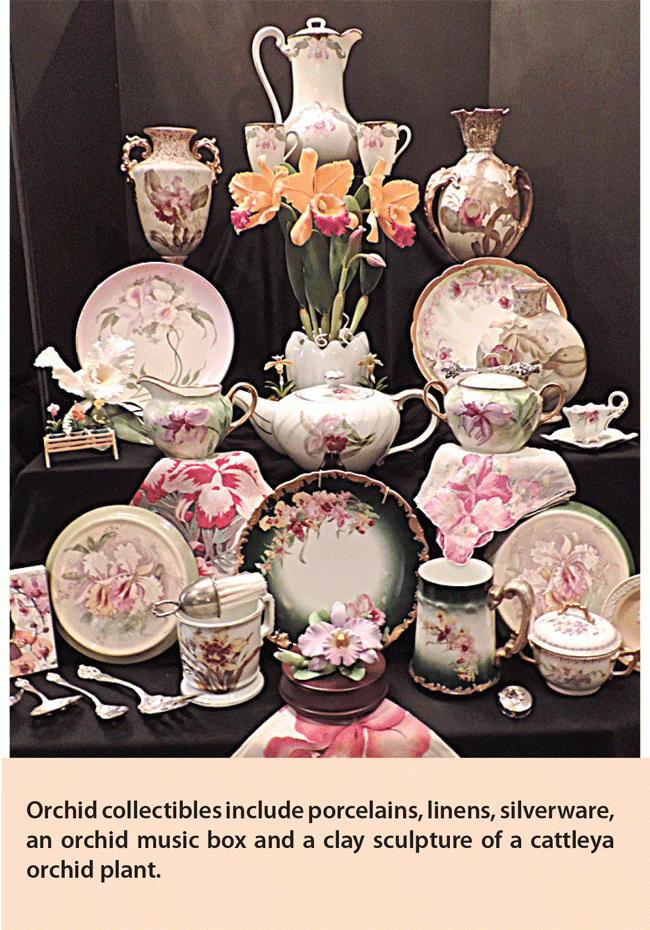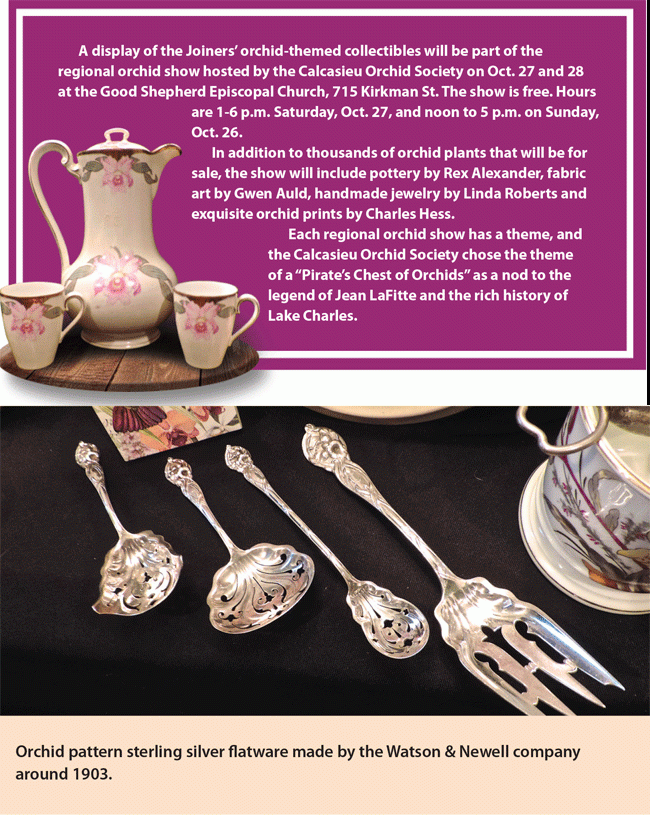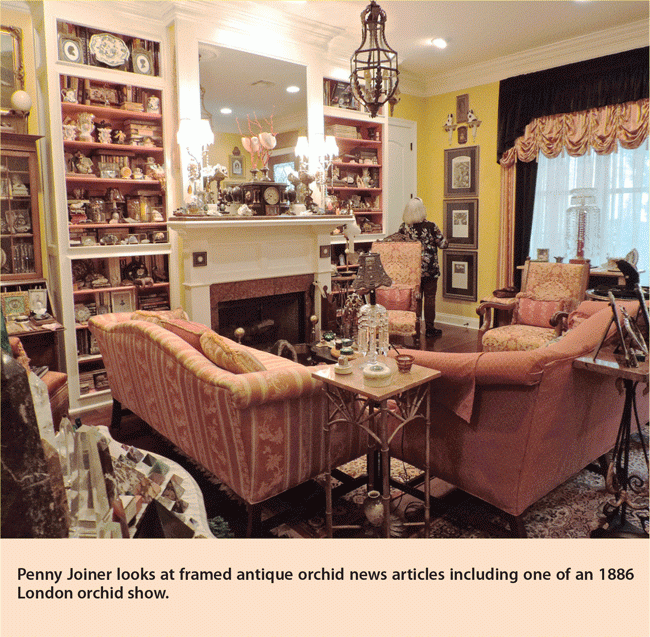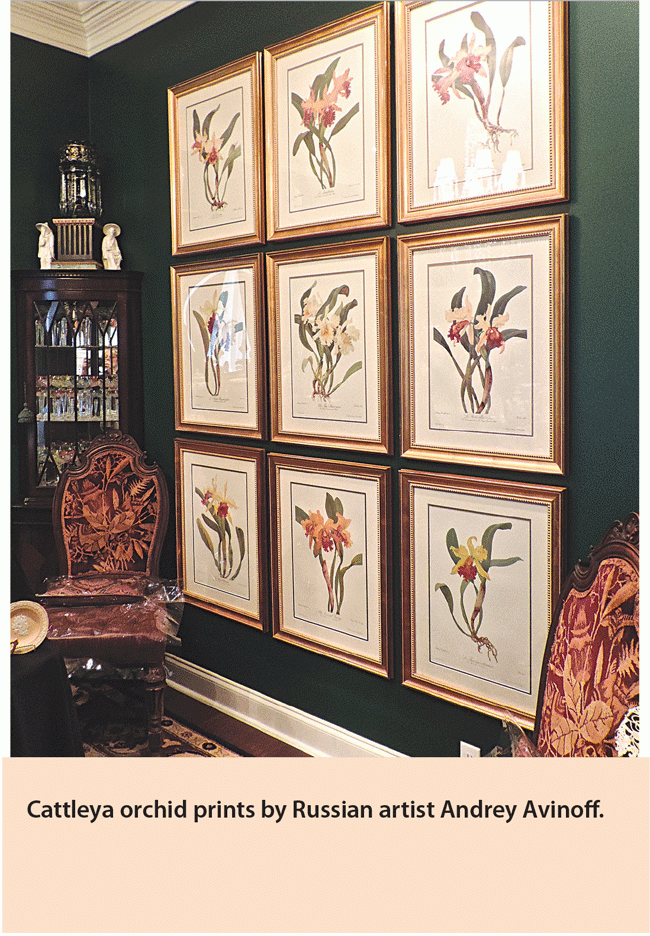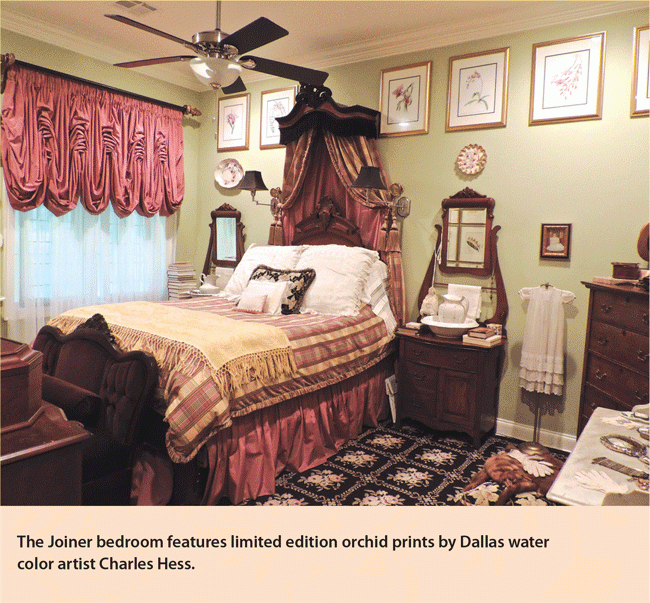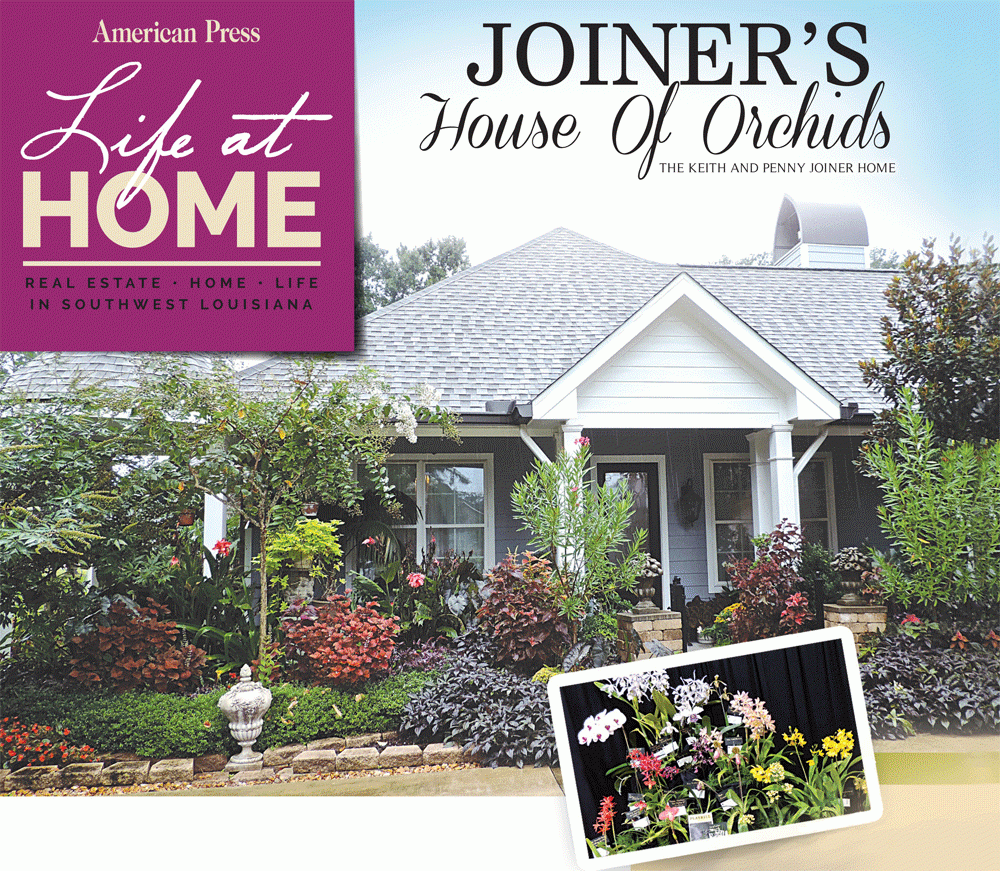The following article is from the American Press (Soutwest Lousiana) October 2018 – stories and pictures by Mary Richardson
It all started with a single plate bought 45 years ago.
It was an exceptionally lovely plate – gold plated orchids on a cream background dating back to 1910. But neither Penny nor Keith Joiner knew that this single plate would eventually lead to a house chock-a-block full of artworks inspired by orchids.
And that is what happened. Gradually their historic house in Monroe was filled with plates, dishes, painting, art prints, silverware and more, all having a theme of orchids. When they retired – Keith from the University of Louisiana system and Penny from the public school system – they decided to move to Lake Charles to be near children and grandchildren. Their home in Lake Charles is a celebration of the beauty of orchids. Decorative arts cover almost every inch.
The collections are anything but helter-skelter. The house was designed specifically to hold their collections. “We spent a lot of time with graph paper, measuring just how wide each wall had to be to hold specific pieces,” Keith said. “When we moved, we knew exactly where everything was going to go.”
This love of orchid art is not surprising. The Joiners also love living orchids. Keith is one of the top orchid growers in the state and has won several prestigious national orchid prizes for his plants. He is the president of the Calcasieu Orchid Society and a charter member of the Northeast Louisiana Orchid Society in Monroe.
He grows his orchids – all 1,400 of them – in a specially designed greenhouse behind their home. So, living orchids are outside; decorative orchids are inside. Keith said his quest for all-thing-orchids was made easier by the fact that designers of decorative arts were enamored with orchids in the 1920s and 30s. “It was everything orchid in a big way,” he said. Asked to list all the types of orchid collectibles they’ve acquired, both of them started listing the expected things first – “china, silverware, Wedgwood, jewelry, porcelain, prints, fabrics” – and then veered into more esoteric things – “cigarette cards, stamps, playing cards, shaving mugs, greeting cards, Austrian chocolate pots, ice cream trays, tremblants…”
Tremblants? It turns out that among Penny’s orchid jewelry collection are two “tremblants” – broaches with an orchid lip attached by a tiny hinge. When the wearer moves, the orchid trembles. Pointing to an exquisitely carved orchid made from ivory from a long dead mam- moth, Penny said, “Some of my jewelry is old, but this piece was made by Linda Roberts, and she will be selling her works at our orchid show on Oct. 27-28. I expect I’ll come home with a few more pieces…”
The Joiners have not stopped collecting. They still give each other orchid-themed collectibles for Christmas, birthday and anniversaries. “We give each other presents at any opportunity we can find,” admitted Keith.
Penny pointed to her latest Christmas gift to Keith – an original cover of the Aug. 7, 1886 edition of London’s Illustrated Weekly, which just happened to be dedicated to an upcoming orchid show.
Several walls are entirely covered with paintings and prints of orchids. One wall is dedicated to the art prints by Charles Hess, a famous artist from Dallas who donates 100 percent of his art sales to organizations that preserve orchid habitats in the rainforests of South America and Asia, and to the study of native orchid species in North America. He will also be at the Oct. 27- 28 orchid show in Lake Charles.
The Joiners share their home with a cat named Pandora who regularly jumps up to mingle with the orchid sculptures on places such as the fireplace mantle. Pandora has never broken anything. And neither have their grand- children, who live next door. “They’re used to all this,” Penny said.
This will be their “forever home,” they say. And with aging in mind, they designed the house to be handicapped accessible. At first glance, it doesn’t appear that the hallways are wide enough for a walker, but they are. The bathrooms are fully accessible.
“We know that we may have ‘special needs’ in the future,” Keith said. “And we want to make sure we can still stay among our orchids.”
